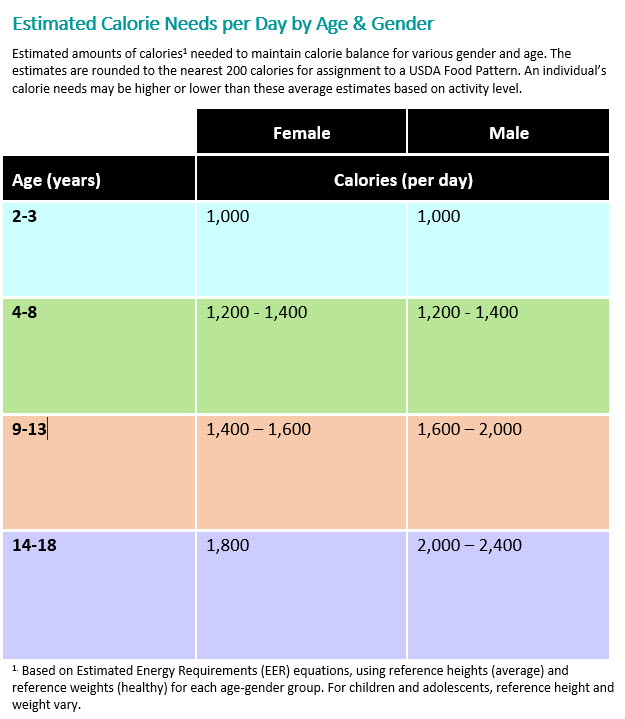Nearly 1 in 3 children in America is overweight or obese. Despite all the focus on kids being overweight and obese, many parents are still confused, especially when it comes to what kids eat. How much does your child need? Is he getting enough calcium? Enough iron? Too much fat?
Whether you have a toddler or a teen, nutrition is important to his or her physical and mental development. Here's what children need — no matter what the age.
Babies
During this stage of life, it's almost all about the milk — whether it's
breast milk,
formula, or a combination of the two. Breast milk or formula will provide practically every nutrient a baby needs for the first year of life.
At about six months most babies are ready to
start solid foods like iron-fortified infant cereal and strained fruits, vegetables, and pureed meats. Because breast milk may not provide enough iron and zinc when babies are around six to nine months, fortified cereals and meats can help breastfed babies in particular.
Once you do start adding foods,
don't go low-fat crazy. Although the AAP guidelines state fat restriction in some babies is appropriate, in general, you don't want to restrict fats under age two because a healthy amount of fat is important for babies' brain and nerve development.
Toddlers & Preschoolers
Toddlers and preschoolers grow in spurts and their appetites come and go in spurts, so they may eat a whole lot one day and then hardly anything the next. It's normal, and as long as you offer them a healthy selection, they will get what they need.
Calcium, the body's building block, is needed to develop strong, healthy bones and teeth. Children may not believe or care that milk "does a body good," but it is the best source of much-needed calcium. Still, there's hope for the
milk-allergic, lactose-intolerant, or those who just don't like milk. Lactose-free milk, soy milk, tofu, sardines, and calcium-fortified orange juices, cereals, waffles, and oatmeal are some calcium-filled options. In some cases, pediatricians may recommend calcium supplements.
Fiber is another important focus. Toddlers start to say "no" more and preschoolers can be especially opinionated about what they eat. The kids may want to stick to the bland, beige, starchy diet (think chicken nuggets, fries, macaroni), but this is really the time to encourage
fruits, vegetables, whole grains, and beans, which all provide fiber. Not only does fiber
prevent heart disease and other conditions, but it also helps aid digestion and
prevents constipation, something you and your child will be thankful for.
Gradeschoolers
It isn't uncommon for a 6- or 7-year-old to suddenly decide to be a
vegetarian once they understand animals and where food comes from. This doesn't mean your child won't get enough
protein; animal tissue isn't the only place we get protein. Rice, beans, eggs, milk, and peanut butter all have protein. So whether your child goes "no-meat" for a week or for life, he or she will likely still get sufficient amounts of protein.
Areas that might be a little too sufficient are sugars, fats, and sodium.
This is a time when kids first go to school and have a little bit more choices in what they eat, especially if they're getting it in the cafeteria themselves. Cakes, candy, chips, and other snacks might become lunchtime staples.
The body needs carbs (sugars), fats, and sodium, but should be eaten in moderation, as too much can lead to unneeded weight gain and other health problems.
Packing your child's lunch or going over the lunch menu and encouraging him or her to
select healthier choices can help keep things on track.
Preteens & Teens
As puberty kicks in, young people need more calories to support the many changes they will experience. Unfortunately, for some, those extra calories come from
fast food or "junk" foods with little nutritional value.
Some adolescents go the opposite way and restrict calories, fats, or carbs. Adolescence is the time kids start to become conscious of their weight and body image, which, for some, can lead to
eating disorders or other unhealthy behaviors. Parents should be aware of changes in their child's eating patterns and
make family dinners a priority at least once or twice a week.
Like calories, calcium requirements are higher. Calcium is more important than ever during the tween and teen years because the majority of
bone mass is built during this time. Encouraging kids to have milk, milk products, or calcium-rich alternatives, should help them get more calcium.
Your child's gender may play a role in whether he or she needs more of a particular nutrient. For instance, teen girls need more iron than their male counterparts to replace what's lost during
menstruation, and males need slightly more protein than girls.
Although getting your child to eat healthy — regardless of his or her age — can be a constant battle, its one well worth fighting. A healthy child becomes a healthy adult, and only with your support and guidance will your child be both.
Water: Drink Up!
Water makes up more than half of kids' body weight and is needed to keep all parts of the body functioning properly.
There's no specific amount of water recommended for children, but it's a good idea to give them water throughout the day — not just when they're thirsty.
Babies generally don't need water during the first year of life.
If your child doesn't like the taste of water, add a bit of lemon or lime for flavor.
Fruits and veggies are also good sources of water.
Kids should drink more water when ill,
when it's hot out, or when engaged in physical activity.
Recommended Amount of Calories
Here's what the United States Department of Agriculture (USDA) recommends kids get calorie-wise and from each food group for a healthy, balanced diet:

Additional Information from HealthyChildren.org: